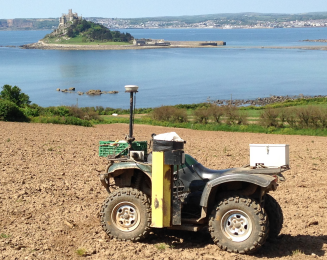Poor sampling gives misleading test results.
Soil sampling can be divided into three major steps: (1) collecting the sample, (2) analysing the sample, and (3) interpreting the results. Collecting the sample is probably the most inaccurate of these steps. A fields soil test result is only as accurate as the sample collected. Poor sampling techniques lead to inaccurate recommendations. Therefore you potentially stand to lose crop yield, quality and profit by applying inaccurate rates of fertiliser.
Get a representative sample. Only about 300g of soil are actually used in the soil analysis procedure so it is vitally important that the field sample collected accurately
represents the whole of the field tested. Best decisions can be made only if soil samples are representative of the area sampled and accurately reflect soil conditions.

Wintex 1000
The Wintex 1000 semi-automatic soil sampler takes homogeneous soil samples up to a depth of 30 cm (approx. 12"). The depth can vary infinitely from 10 - 30 cm (approx. 4" - 12" ). The soil sample is taken with a probe and not an auger as with other soil sampling machines . This means that the Wintex 1000 takes a completely homogenous sample, being a cone of soil that is taken at the adjusted depth. If the sample is taken with an auger, you will always take more material from the top layers than from the lower layers of soil. Wintex 1000 is distinguished by the fact that it can take samples in any kind of soil - including newly ploughed soil.
Used in conjunction with the highly accurate Trimble GPS equipment we can sample on any grid size requested by the customer. Generally around 20 equally spaced samples are taken and combined into one sample and sent for analysis. Fields larger than 10 Ha are split sampled. We can also sample on a smaller grid for nutrient mapping..



